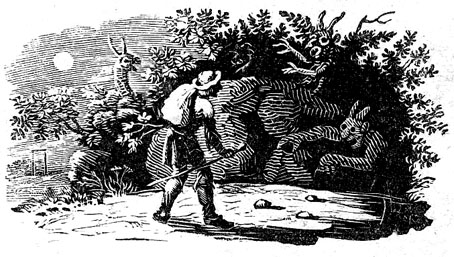
Alright, these devils are inked rather than painted, but the phrase is a memorable one from Macbeth which was also used by Robert Aickman as a title for one of his story collections.
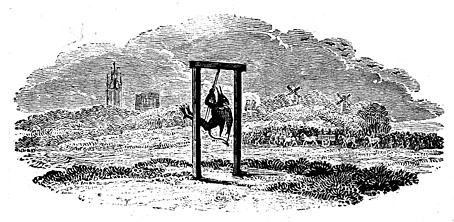
The devils in question are the work of Thomas Bewick (1753–1858), an English engraver referred to twice in Casting the Runes by MR James. I was reminded of this recently after I’d watched the excellent film adaptation, Night of the Demon, and decided to reacquaint myself with its origin. In James’ story, Karswell, a vengeful occultist with a vague resemblance to Aleister Crowley, torments a man he’s cursed by reminding him of the escalating supernatural threat and its potentially fatal outcome. One of the warnings is as follows:
…two things came for him by post during those weeks, both with a London postmark, and addressed in a commercial hand. One was a woodcut of Bewick’s, roughly torn out of the page: one which shows a moonlit road and a man walking along it, followed by an awful demon creature. Under it were written the lines out of the “Ancient Mariner” (which I suppose the cut illustrates) about one who, having once looked round—
walks on,And turns no more his head,
Because he knows a frightful fiend
Doth close behind him tread.
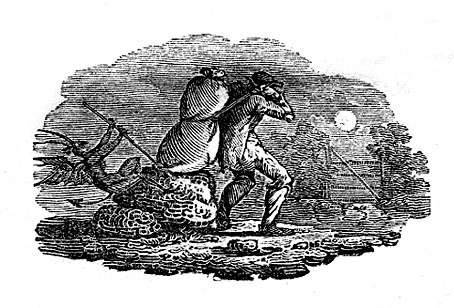
The Coleridge quote makes it into the film but there’s no mention of the woodcut, although we do see some other engravings of medieval devils. (Likewise, the ITV Playhouse adaptation from 1979 includes the quote but omits the woodcut.) Since the quote is a genuine one I was curious to know whether the Bewick picture also existed. Unfortunately, this doesn’t seem to be the case. I’m equivocating, as usual, because I’m not entirely certain, but in an article from 2006 Tom Lubbock had this to say about Bewick and James:
Like Borges, James delights in the fictional but plausible work of literature. In Casting the Runes, he also contrives a fictional work of art. Though a contemporary of Coleridge, the engraver Thomas Bewick never made any woodcuts illustrating The Rime of the Ancient Mariner, nor do any of his works quite correspond to the one described in this passage. Still, it’s a good fake. Many of Bewick’s woodcuts have travellers. Some of them have moonlight and demons, too. You can see what James had in mind.
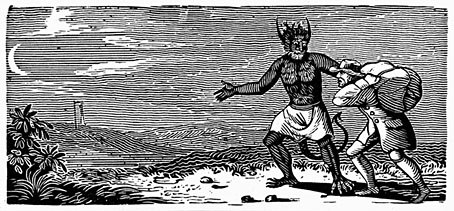
I’d describe Bewick’s creatures as devils rather than demons since the figures he actually did engrave tend to be the typical imp-like characters of folklore; James’ description suggests something much darker, the kind of thing you’d expect from Gustave Doré. All the same, without re-reading the story I might not have seen these at all. Bewick was a prolific artist and a natural historian whose many depictions of animals, especially birds, are his most commonly reproduced illustrations. But he also illustrated popular fables and scenes of country life, hence the straying into fantasy. None of his illustrations are very sinister but then I suppose this depends on the frame of mind of the viewer. Somebody who’s been cursed by a disgruntled alchemist, and who’s beginning to feel the reality of a demonic threat, might regard woodcuts like these in a different light.
Casting the Runes mentions another demonic picture, one whose description echoes that of the fake Bewick engraving. In addition to tormenting the victims of his curses, Karswell also terrifies the local children with a display of magic-lantern slides:
At last he produced a series which represented a little boy passing through his own park—Lufford, I mean—in the evening. Every child in the room could recognize the place from the pictures. And this poor boy was followed, and at last pursued and overtaken, and either torn to pieces or somehow made away with, by a horrible hopping creature in white, which you saw first dodging about among the trees, and gradually it appeared more and more plainly.
Reading this again made me think of Edward Gorey’s scenes of imperilled infants; it brings to mind a typical Gorey child tip-toeing nervously through a wood where an evil shape is outlined by a field of dense cross-hatching. Did Gorey ever illustrate Casting the Runes? Yes, he did, as it happens, in 1959 for The Haunted Looking-Glass, a collection of his favourite ghost stories, all of which he illustrated.
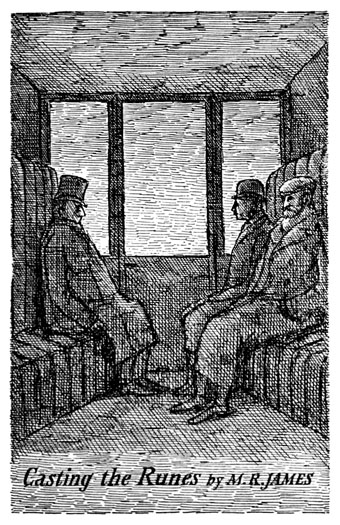
Gorey depicts the climactic confrontation between Karswell, Dunning and Harrington on the train to Dover; an unusual choice but it gives him the opportunity to draw more Edwardian gentlemen in their natural habitat. The scene reminds me of another rail carriage in Alice’s adventures through a very different looking-glass.
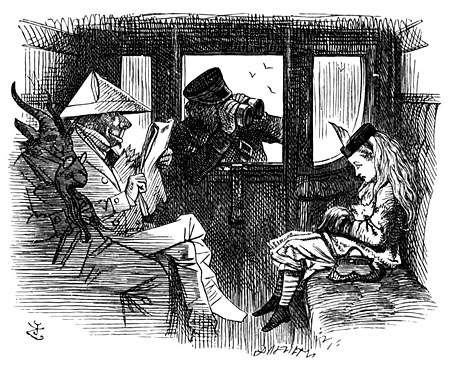
Some years ago I posted this illustration together with an extract from Iain Sinclair’s exegesis of the same picture from Downriver, while comparing the illustration to a rail-carriage scene from Max Ernst’s engraving collages. Tenniel’s drawing acquires fresh resonance when set beside Gorey’s illustration; in this light it appears as a conflation of both Casting the Runes and Night of the Demon, with the unnamed “gentleman in white paper” representing Karswell, while Alice has become the hypnotised Joanna Harrington who Karswell is kidnapping at the end of the film. The Goat in this reading would be the demonic presence that’s unseen in Gorey’s illustration, an identification reinforced by Sinclair’s interpretation where the creature is compared to a Tarot Devil.
Weird Tales, March 1938.
All of this leaves the original search for Thomas Bewick’s stalking demon unfulfilled so I’ll end with a return to the Coleridge quote and a genuine illustration of the same by Virgil Finlay, one of a series of pictures-with-quotes that Finlay drew for Weird Tales. Coleridge’s poem has been illustrated by many different artists over the years but The Ancient Mariner is so crowded with incident and spectacle that illustrations of the James quote are scarce. Finlay’s drawing shows more of a mundane fiend than Karswell’s demon but you still wouldn’t want to meet this character on a lonesome road, whatever the time of day.
Previously on { feuilleton }
• Seasonal spectres
• Demons by rail-light: Stefan Grabinski’s weird fiction
• Ghosts of the Chit-Chat
• Abbeys by MR James
• “Who is this who is coming?”

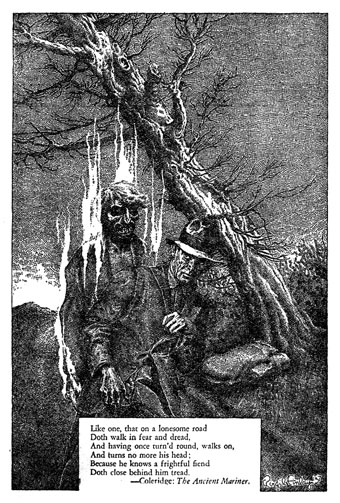
The Haunted Looking Glass is a great collection. I heard about it a few years ago at a Gorey exhibit, and haven’t managed to get a copy, but it looks like all but one of the stories (“A Visitor From Down Under”) are in the public domain, so it’s possible to read them online at least.
I’d love to have a copy of the Gorey book as well, even though I have almost all the stories in other books; the Hartley I have in another collection by Alberto Manguel. You find this a lot with ghost stories, the same few pieces get reprinted over and over again.
I ended up gathering links to online version of all the public domain stories in The Haunted Looking Glass – some of them may be a little rough to read on mobile, but at least they’re all in one place here.
https://www.dampfkraft.com/fiction/haunted-looking-glass.html
Good one, thanks. I think I have some of those stories multiple times in various collections, it makes me wonder which story I have the most copies of.
August Heat was the subject of a post here a couple of years ago which includes Gorey’s illustration: http://www.johncoulthart.com/feuilleton/2020/08/11/august-heat/
Thanks for the tip, and gathering those up! I added a link to it in my post.